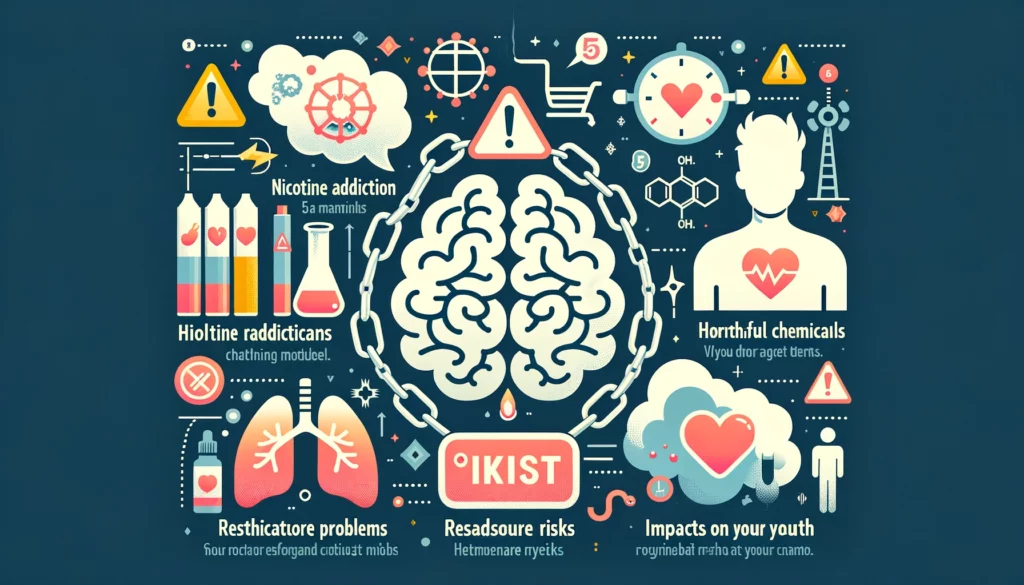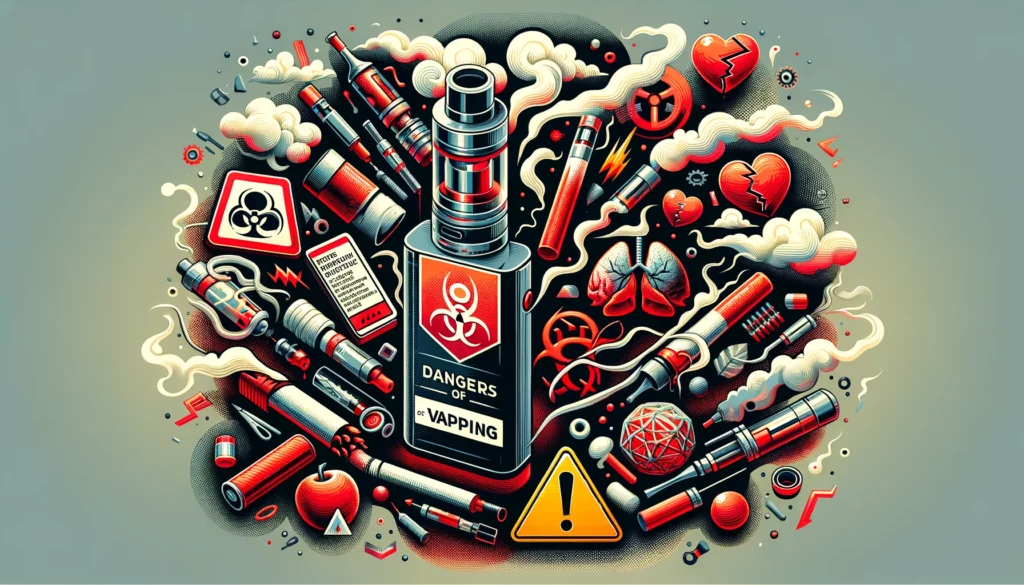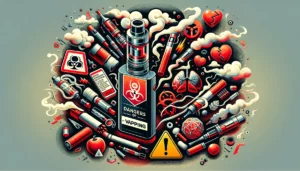Vaping, often perceived as a safer alternative to traditional smoking, has gained significant popularity in recent years. However, it’s crucial to understand the potential dangers associated with vaping, especially as its long-term effects are still being studied.
Understanding Vaping
Vaping involves inhaling aerosol, commonly referred to as vapor, produced by an e-cigarette or similar device. These devices heat a liquid that typically contains nicotine, flavorings, and other chemicals. Unlike traditional cigarettes, there’s no combustion, leading to the perception that vaping is less harmful.
Health Risks of Vaping

- 1. **Nicotine Addiction:** Many e-cigarettes contain nicotine, the same addictive drug found in regular cigarettes. Nicotine addiction can lead to increased use of other tobacco products and can affect brain development in teens.
- 2. **Harmful Chemicals:** Vaping liquids contain various chemicals and substances, like diacetyl, which is linked to serious lung disease, heavy metals such as nickel, tin, and lead, and other volatile organic compounds.
- 3. **Respiratory Problems:** There’s evidence suggesting that vaping can impair lung function and exacerbate respiratory ailments. The long-term impact on lung health is still a subject of ongoing research.
- 4. **Cardiovascular Risks:** Nicotine can increase blood pressure and spike adrenaline levels, potentially increasing the risk of heart attack.
- 5. **Impacts on Youth:** There’s a growing concern about the rise of vaping among teenagers and young adults. The flavors and marketing strategies often appeal to a younger audience, potentially leading to nicotine addiction at a young age.
The EVALI Outbreak
A notable concern is the outbreak of e-cigarette or vaping product use-associated lung injury (EVALI). In 2019, the CDC reported thousands of cases of EVALI and several deaths linked to vaping. The exact cause was primarily associated with vitamin E acetate, a thickening agent used in some THC-containing e-cigarettes.
Regulatory Response
In response to these health concerns, governments and health organizations worldwide have begun to regulate vaping products. These regulations include banning certain flavors, restricting sales to minors, and enforcing labeling and quality standards.
Conclusion
While vaping may be less harmful than traditional cigarettes, it’s not risk-free. Especially for non-smokers and young people, the potential health risks make it advisable to avoid vaping. If you’re trying to quit smoking, consider other, more established methods like nicotine replacement therapies or consulting a healthcare professional.
Remember, the long-term impacts of vaping are still emerging, and it’s important to stay informed and cautious about its use.




